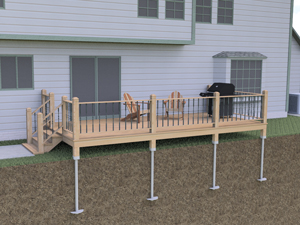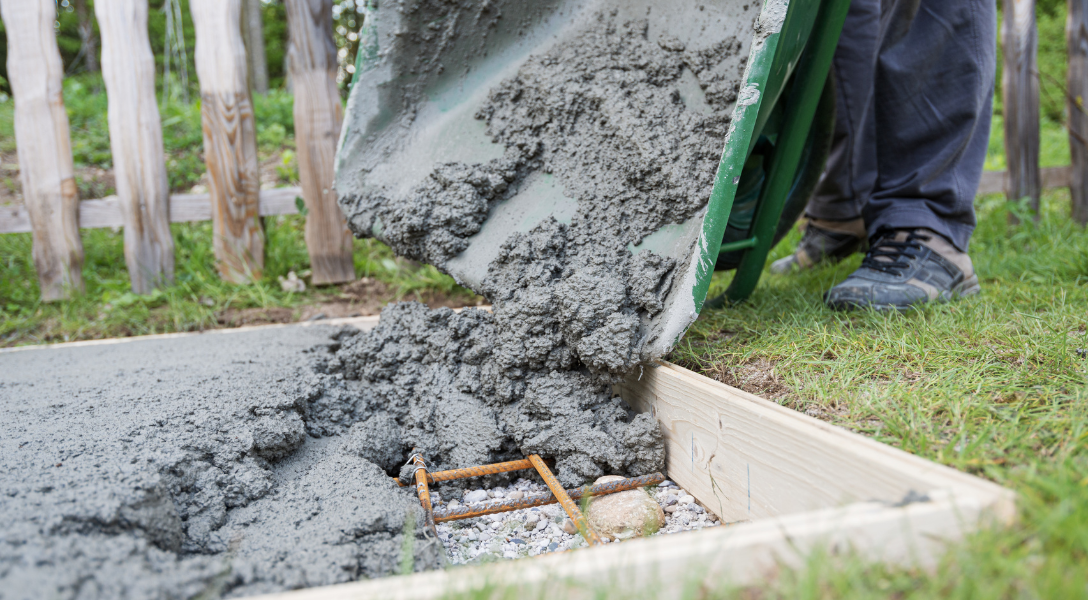Architectural Stability Matters: Selecting the Right Deck Footings for Your Outdoor Job
Wiki Article
Selecting the Right Deck Footings for Stability and Sturdiness
The durability and safety and security of your deck depend greatly on the type of grounds you pick, as they provide the essential support and stability to stand up to the test of time. In this conversation, we will discover the different types of deck grounds, think about the vital aspects to evaluate when making a choice, and delve into the pros and cons of various alternatives.Types of Deck Footings
These footings are composed of a cylindrical hole filled up with concrete, which offers a strong structure for the deck posts. Concrete pier footings are fairly easy to set up and provide exceptional security, making them a prominent selection for several deck projects.These footings are mounted by screwing them right into the ground, which produces a protected foundation for the deck. They also permit for easy adjustment and progressing of the deck if needed.
Additionally, some builders select precast concrete footings. These grounds are constructed from durable concrete and come in various sizes and shapes to fit different deck layouts. Precast concrete grounds are practical to set up and supply a stable base for the deck structure.
Lastly, one more option is the post-in-anchor footing system. This kind of footing involves driving a steel support into the ground and attaching it to the deck post. It provides versatility in regards to placing the deck blog posts and appropriates for decks with lightweight structures.
When picking the right type of deck footing, it is important to think about aspects such as dirt problems, deck tons, and neighborhood building codes (Deck Footings). Consulting with a professional specialist or architectural designer can aid guarantee the ideal ground is chosen for a safe and secure deck
Factors to Consider When Picking Footings
When selecting the ideal grounds for a deck, it is important to carefully take into consideration numerous aspects such as dirt problems, deck tons, and adherence to regional building codes. These aspects play a substantial duty in guaranteeing the security and toughness of the deck structure.The type of dirt on which the deck will certainly be constructed figures out the type of footings called for. On the other hand, decks constructed on clay or expansive dirts may need footings that can fit the dirt's propensity to increase and contract.
Another essential aspect is the deck lots. The weight of the deck, including the products made use of and any potential live tons such as furnishings or celebrations, must be thought about when choosing grounds. The grounds need to be created to birth the weight of the deck and distribute it uniformly to protect against any kind of architectural issues or failures.
Lastly, adherence to local building regulations is paramount. Building ordinance vary from area to region, and it is vital to abide with the certain requirements established by the local authorities. Deck Footings. These codes make certain that the deck is developed securely and satisfies the essential requirements for architectural stability and load-bearing capacity
Concrete Grounds: Disadvantages and pros

Concrete footings supply numerous advantages and negative aspects when made use of as the foundation for a deck. On the positive side, concrete grounds supply exceptional security and durability.
An additional benefit of concrete footings is their convenience. They can be put right into various sizes and shapes to suit various deck designs and setups. Concrete grounds can be tailored to fit the particular demands and requirements of the deck framework.
However, there are also some disadvantages to utilizing concrete footings. This can boost the general expense of the deck task and might need expert support.

Helical Piers Vs. Sonotubes: Which Is Better?
In thinking about the structure options for a deck, the contrast between helical piers and sonotubes is important in establishing the remarkable option. Helical piers, likewise referred to as screw stacks, are steel shafts with helical plates attached to them. They are twisted right into the ground using hydraulic equipment, supplying a stable and long lasting foundation for the deck. On the other hand, sonotubes are cylindrical types made from cardboard or fiber product that are loaded with concrete. They are placed in an opening explored the ground and supply support for the deck.The helical plates on the piers create a solid grip with the dirt, avoiding any kind of activity or moving of the deck. Sonotubes, on the various other hand, depend solely on the concrete filling for security, which may not use the same level of toughness and resistance.
In terms of installment, helical piers are relatively less complicated and faster to set up contrasted to sonotubes. site link The hydraulic machinery utilized to turn the piers into the ground makes sure a quick and effective procedure. Sonotubes, on the other hand, need excavating openings and pouring concrete, which can be lengthy and labor-intensive.
Furthermore, helical piers are an even more versatile choice. They can be made use of in different dirt problems and can be adjusted or strengthened if required. Sonotubes, on the other hand, might need additional assistance, such as rebar, in specific dirt problems or areas with high lots demands.
Picking the Right Footings for Your Deck's Dimensions
For optimum structural honesty, it is vital to very carefully choose the proper grounds that align with the measurements of your deck. The dimensions of visit here your deck, including its elevation, size, and length, play a substantial duty in establishing the kind and dimension of grounds required.When choosing grounds for your deck, it is very important to take into consideration the load-bearing ability of the dirt. The weight of the deck, combined with the weight of any kind of furnishings or individuals on it, applies a substantial pressure on the footings (Deck Footings). As a result, it is critical to pick grounds that can adequately sustain this weight without changing or sinking gradually.
Larger decks with greater measurements call for bigger footings to offer sufficient security and assistance. The shape of the footings, whether they are square or round, depends on the style and design of the deck.
Verdict
To conclude, picking the best deck grounds is critical for making certain stability and resilience. Factors such as the sort of footings, the deck's dimensions, and the advantages and disadvantages of different alternatives must be thought about. Concrete grounds supply toughness and long life, however may be more costly and time-consuming to install. Helical piers and sonotubes have their you could look here very own benefits and disadvantages. Eventually, choosing the suitable footings for your deck's details requirements is essential for a effective and resilient structure.These footings consist of a cylindrical hole filled with concrete, which offers a strong structure for the deck articles. Concrete pier grounds are reasonably very easy to install and offer outstanding stability, making them a prominent option for lots of deck tasks.
Precast concrete footings are practical to set up and give a secure base for the deck framework.
It supplies versatility in terms of placing the deck messages and is ideal for decks with lightweight structures.
Concrete grounds provide numerous advantages and drawbacks when utilized as the structure for a deck.
Report this wiki page